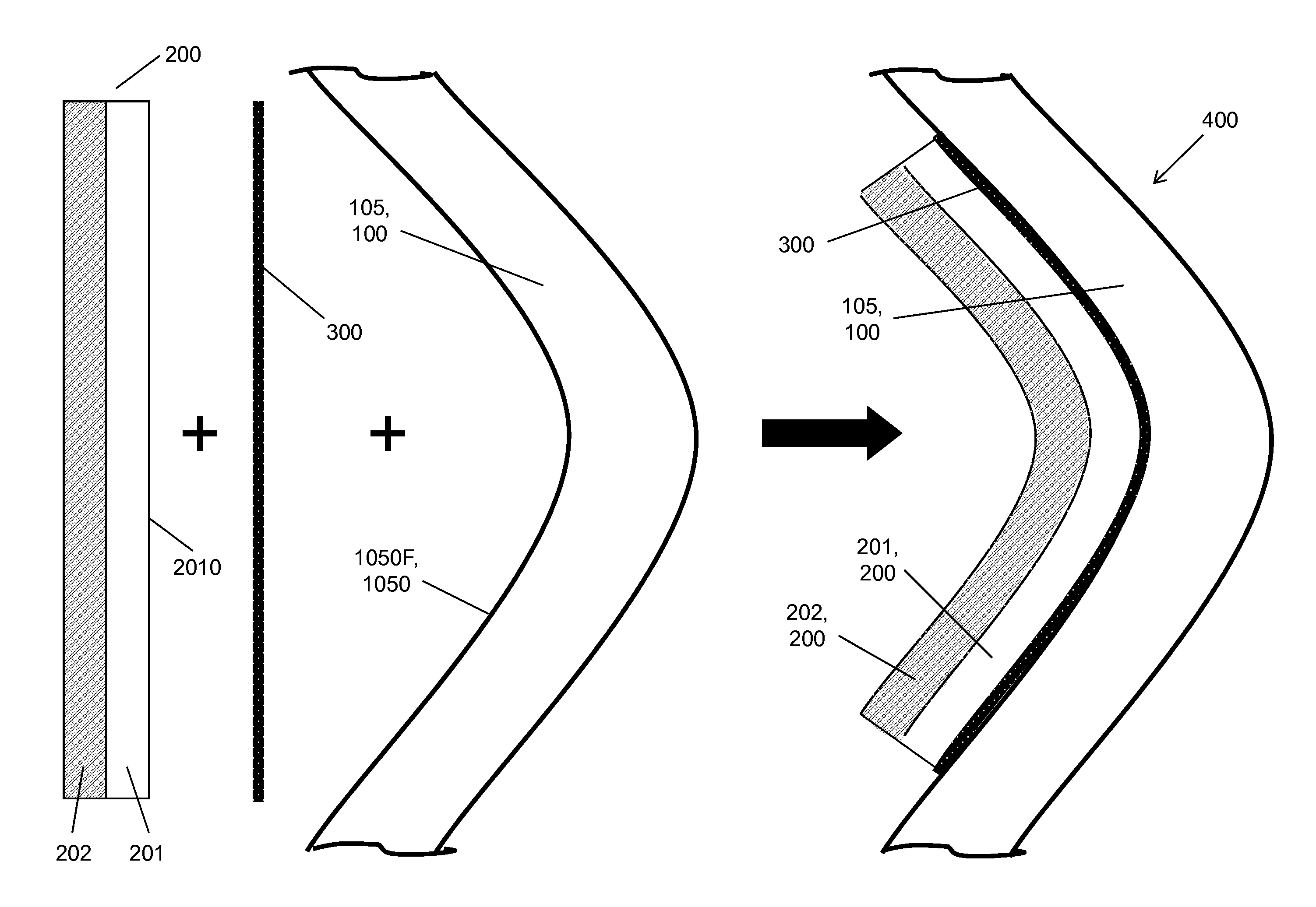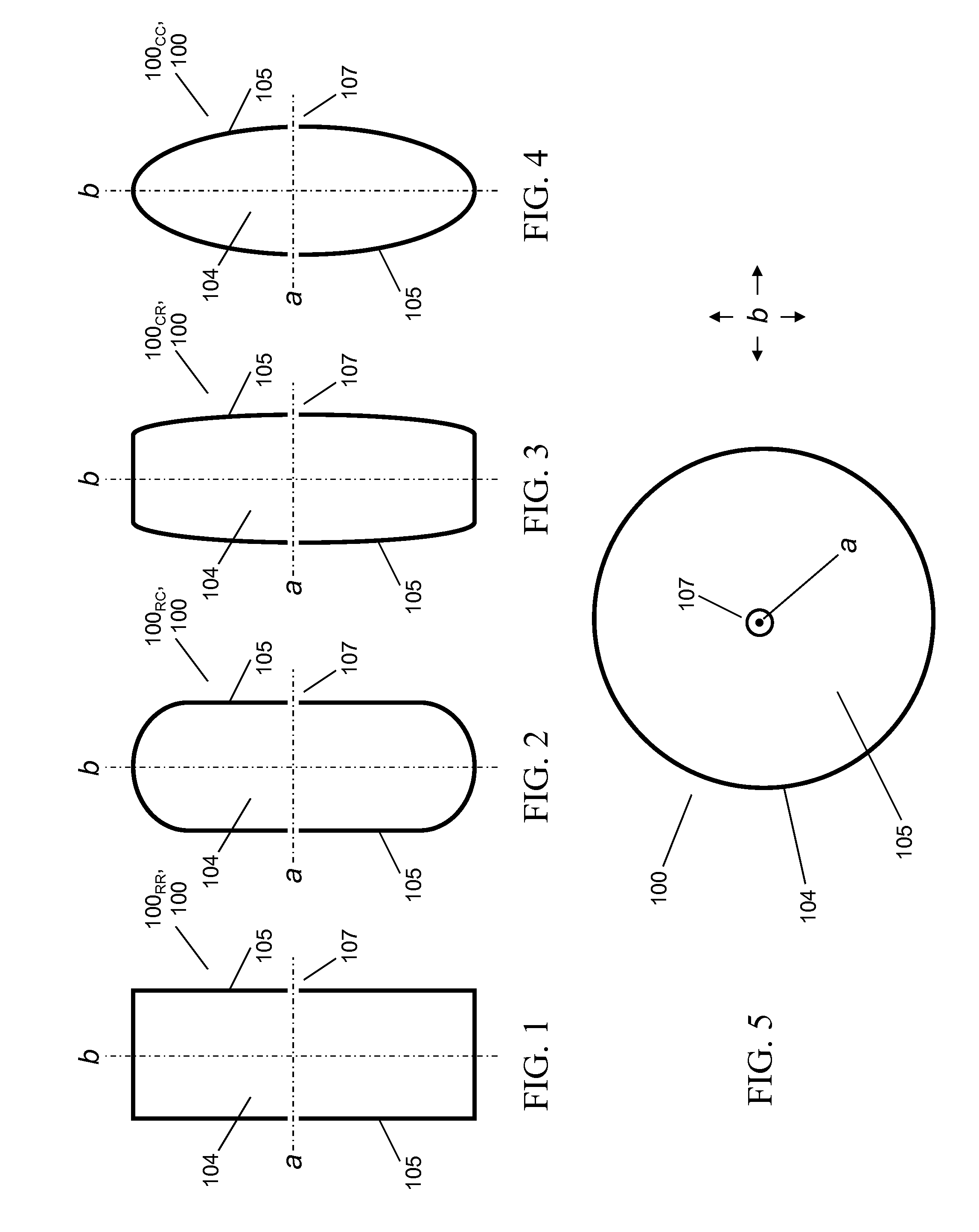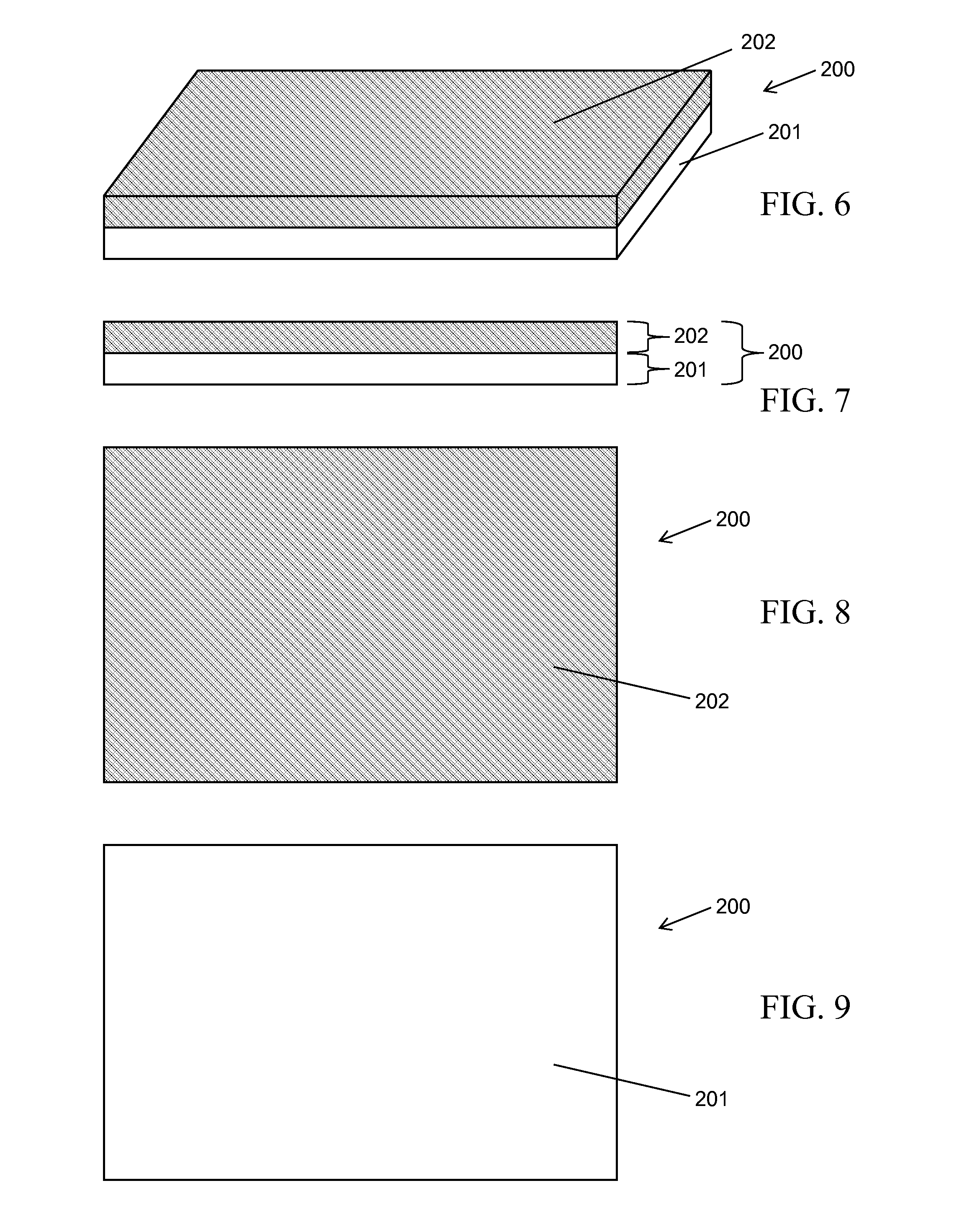RF cavity fabrication method including adherence of superconductor-coated tiles
a superconductor-coated, rf cavity technology, applied in the direction of accelerators, resonators, electrical devices, etc., can solve the problems of complex, bulky, expensive liquid-helium-based cooling systems, etc., and achieve the effect of convenient, convenient and economical operation
- Summary
- Abstract
- Description
- Claims
- Application Information
AI Technical Summary
Benefits of technology
Problems solved by technology
Method used
Image
Examples
Embodiment Construction
[0053]Referring now to FIG. 1 through FIG. 5, cavity preforms 100 that are suitable for inventive practice are typically characterized by conventional “pillbox” shapes. The terms “cavity preform” and “cold cavity” are used synonymously herein to refer to the “superconductor-less” frame of an RF cavity, i.e., the basic RF cavity structure, absent superconductor material. A cavity preform is typically a rigid, hollow, “walling” structure, and is typically made of a metallic (metal or metal alloy) material, although it could be made of another (e.g., ceramic or composite) suitable material. The term “pillbox” is broadly used herein to describe a shape that is cylindrical or generally cylindrical.
[0054]As depicted in FIG. 1 through FIG. 4, pillbox cavity preform 100 is characterized by lateral symmetry, straight and / or curved, with respect to its geometric planar bisector b, with respect to which its geometric axis a is perpendicular. As further depicted in FIG. 1 through FIG. 4, a pill...
PUM
 Login to View More
Login to View More Abstract
Description
Claims
Application Information
 Login to View More
Login to View More - R&D
- Intellectual Property
- Life Sciences
- Materials
- Tech Scout
- Unparalleled Data Quality
- Higher Quality Content
- 60% Fewer Hallucinations
Browse by: Latest US Patents, China's latest patents, Technical Efficacy Thesaurus, Application Domain, Technology Topic, Popular Technical Reports.
© 2025 PatSnap. All rights reserved.Legal|Privacy policy|Modern Slavery Act Transparency Statement|Sitemap|About US| Contact US: help@patsnap.com



